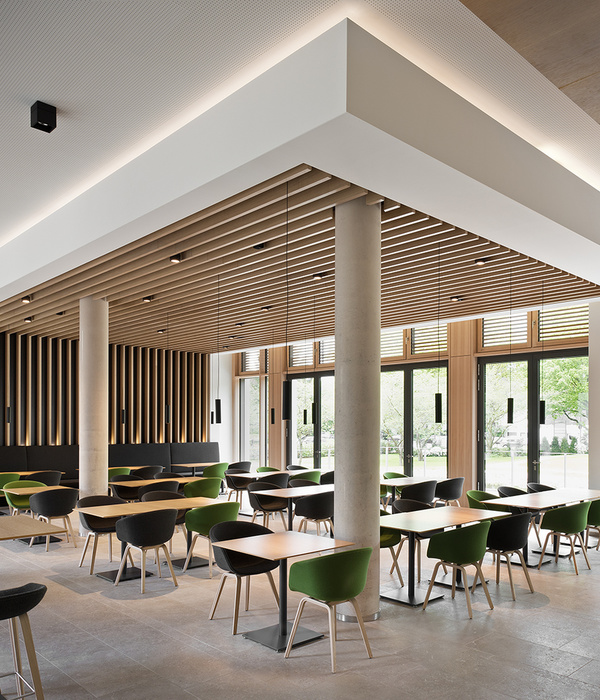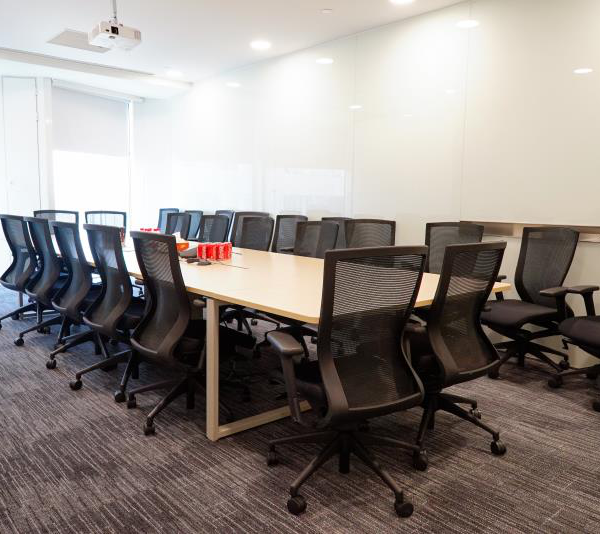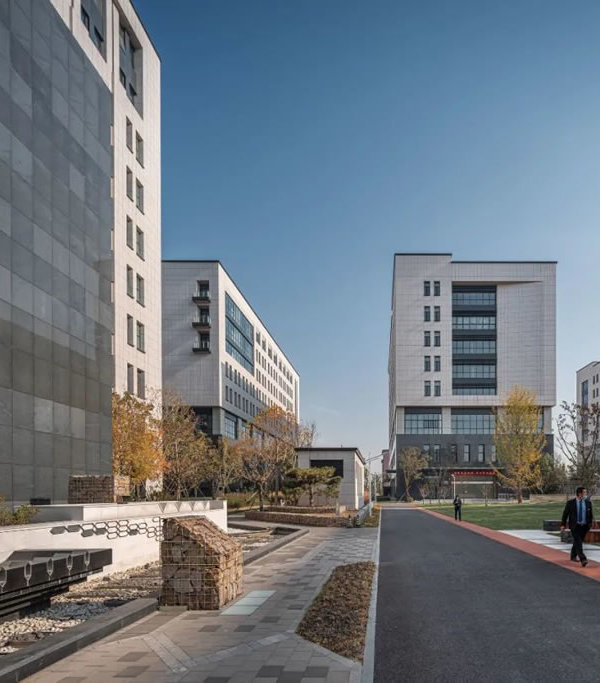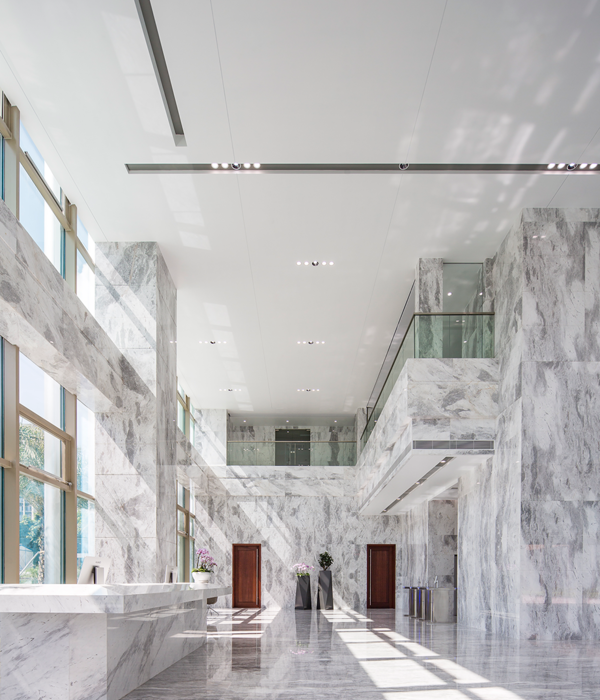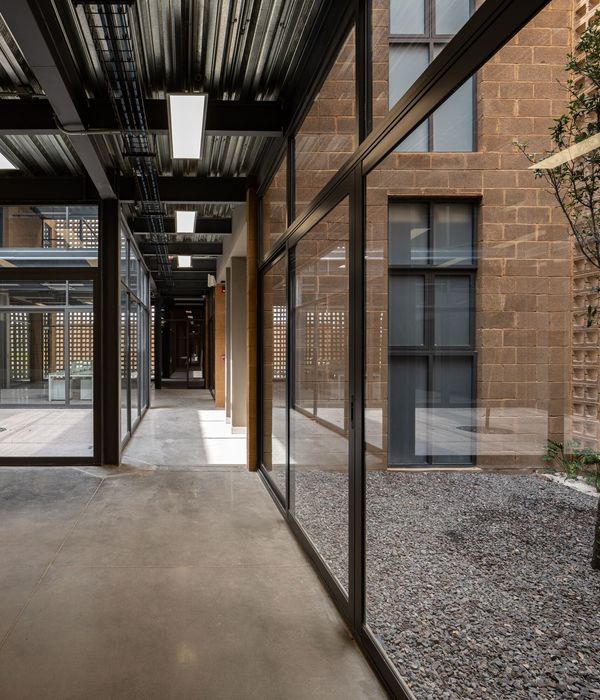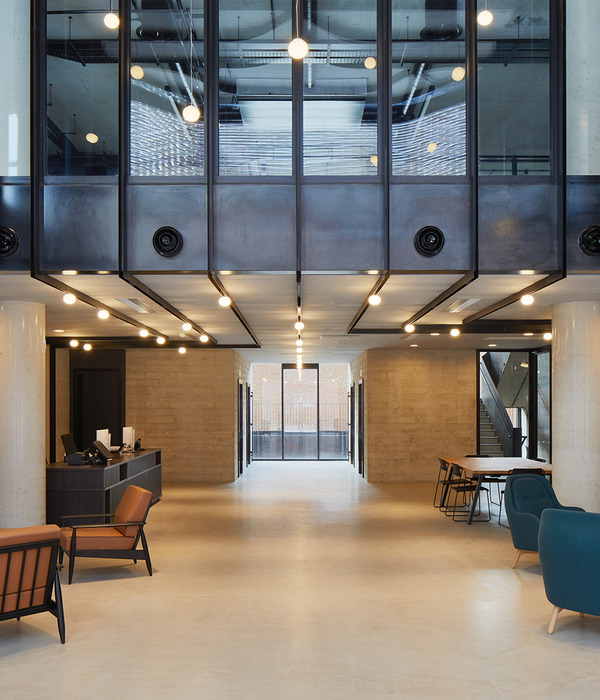由Future Firm设计的Hem住宅是一栋由金属包覆的、面积为1300平方英尺(约121平方米)的房子,为当代建筑在芝加哥开辟了更广泛的市场。项目位于East Garfield公园社区,由Hem Development实施开发和建造——该公司由Future Firm的联合负责人Craig Reschke与芝加哥房地产开发商Joseph Root联合经营。
Future Firm has designed Hem House, a metal-clad, 1,300-sf home that makes contemporary architecture available to a broader market in Chicago. Located in the city’s East Garfield Park neighborhood, the project was developed and constructed by Hem Development, a joint venture by Future Firm co-principal Craig Reschke and Chicago real estate developer Joseph Root.
▼俯瞰住宅,Aerial view © Daniel Kelleghan
虽然Hem住宅与附近的经济适用房并不存在竞争关系,但它有助于填补住房类型中“缺失的中间部分”。在该街区的其他位置,新建住宅的起步价约为60万美元,而Hem住宅的目标是为正在租房或有兴趣在该街区安家的业主提供多样化的住房选择,其价格大约等同于多单元的公寓建筑。
While Hem House does not compete with subsidized affordable housing in the neighborhood, the project helps fill in the “missing middle” of housing options. New construction elsewhere in the neighborhood beginning at $600k, Hem House is an effort to diversify the stock of homes available for folks who are currently renting or are interested in moving to the neighborhood, at a similar price as a condo in a multi-unit building.
Future Firm联合负责人Ann Lui表示:“芝加哥拥有非常活跃的艺术和文化场景,但定制的当代建筑却并不多见,现有的住宅建筑往往价格高昂——因此我们希望可以改变这种局面。”
另一位负责人Reschke补充道:“我们想用具有战略性的建造方案和设计理念来打造一座住宅,使成本相对降低,从而为芝加哥空置的住宅用地提供新的利用可能。”
“While there’s a very vibrant art and culture scene in Chicago, there isn’t a lot of bespoke contemporary architecture, and what exists in residential is almost exclusively very high end—so we’re hoping to help change that narrative,” says Ann Lui, Future Firm co-principal.
“We wanted to create a house using a few strategic construction and design ideas to keep costs down, as an idea for Chicago’s vacant residential lots,” adds Reschke.
▼客厅入口立面,Entrance to the living room © Daniel Kelleghan
Hem住宅坐落在East Garfield公园内的一条住宅街道的中间位置,与当地公共绿地和交通站点的距离均在步行范围内。从尺度上看,住宅和谐地融入了其所在的背景;从平面布局和材料上看,它与周围典型的砖石连排别墅和双户住宅形成了显著对比。
Hem House sits in the middle of a residential street in East Garfield Park, within walking distance of the local public park and public transportation. In scale, the structure adheres to its context, while in plan and materiality, it stands out from the typical brick and stone townhouses and two-flats that surround it.
▼住宅与周围典型的砖石建筑形成显著对比 The house stands out from the typical brick and stone structures that surround it © Daniel Kelleghan
该项目对芝加哥典型的25×125英尺的住宅地块做出调整,创建了一种宽度较小(16英尺)的住宅类型,并留出6英尺的后退区域,以置入宽敞的侧边花园、中央入口和横跨长立面的窗户。通过这种方法,Hem住宅提供了一种易于复制的大两居住房模式,可以完美适应芝加哥的大多数空置住宅用地。
▼设计分析图,Diagram © Future Firm
The project reorients the typical Chicago 25 x 125-foot residential lot by creating a narrower, 16-foot-wide home with a 6-foot setback, allowing for an ample side garden, central entrance, and windows lining the long facade. In this way, Hem House offers an easily replicable model for a spacious, two-bedroom home that fits seamlessly on the majority of Chicago’s many vacant residential lots.
▼长立面一侧留出6英尺的后退区域,There is a 6-foot setback lining the long facade © Daniel Kelleghan
▼两个体量被黑色金属壁板包覆,The volumes are monolithically clad in black metal siding © Daniel Kelleghan
住宅由两个体量堆叠而成:一层是一个较长的矩形体量,二层是一个150平方英尺(约14平方米)的小体量。两个体量被黑色金属壁板包覆,这种材料通常被用于屋顶,给人一种锋利且整洁的观感,同时也具有较好的耐用性和较低的维护成本。单坡屋顶由简洁的预制桁架构成,可以便捷地进行安装,且能够减少排水槽中的积水和场地内的雨水。此外,住宅采用了板式结构,降低了挖掘的成本,同时也更加方便轮椅和婴儿车的通行。
▼轴测分解图,Axon exploded © Future Firm
The home consists of two stacked volumes—a long rectangular first story with a smaller rectangular 150-sf mezzanine on top—which are monolithically clad in black metal siding typically used for roofing, giving a sharp, clean look while also being durable and low maintenance. A single-sloped roof is made from simple pre-fab trusses, allowing for fast and easy framing and the reduction of gutters and storm water on site. Additionally, the house is slab on grade, a decision which reduced excavation costs while also creating a more accessible space for wheelchair users, strollers, and other similar conditions.
▼入口区域,Entry way © Daniel Kelleghan
▼采光良好的厨房和生活区,The light-filled kitchen and living area © Daniel Kelleghan
▼L型的厨房使布局的可能性最大化 © Daniel Kelleghan An L-shaped kitchen arrangement maximizes layout possibilities
▼楼梯通往夹层,Staircase leading to the mezzanine © Daniel Kelleghan
▼室内细节,Interior view © Daniel Kelleghan
▼夹层空间,The mezzanine © Daniel Kelleghan
▼夹层一角,A corner of the mezzanine © Daniel Kelleghan
该设计策略还为位于侧边花园中央的入口留出了空间:玻璃材质的前门向洗衣房区域开放,为整个门廊区域带来充足的光线。两间卧室被集中设置在门廊右侧;两面大尺寸的落地窗和一面较小的平开窗面向侧边花园,为主卧室带来了最大程度的采光和隐私性。
This strategy also makes room for an entrance that is centrally located on the side yard of the building, where a glass front door opens onto a combination mudroom and laundry room and floods the entryway with light. To the right of the entryway, on the street side, Future Firm has gathered the home’s bedrooms. A 220-sf primary bedroom measuring the full width of the home sits at the back of the house. Two large picture windows and one smaller casement window face the side yard to maximize light and privacy in the primary bedroom.
▼起居室,Living room © Daniel Kelleghan
▼楼梯和家具细节,Staircase & furniture detail © Daniel Kelleghan
▼平面图,Floor plans © Future Firm
Project credits:
Developer: Hem Development (Craig Reschke and Joseph Root)
Builder: Cohab Construction (Craig Reschke and Joseph Root)
Architect: Future Firm (Project Architects: Ann Lui and Craig Reschke,
Project Team: Andrea Hunt, Paul Jasper, Chloe Munkenbeck, Jingyu Jwa, and Joon Kang)
Realtor: MG Group (Listing Agent: Alice Jordan)
Capital Partner: PRK Properties, LLC (Joseph Pensinger, Michael Root, Bruce Klink)
Photography: Daniel Kelleghan Photography
Photography Staging: Nora Mattingly Interiors
Photography Staging – Gazelle Chair (in black and natural): Norman Teague Design Studios & Max Davis
In partnership with the Cook County Land Bank Authority.
{{item.text_origin}}


